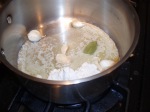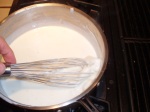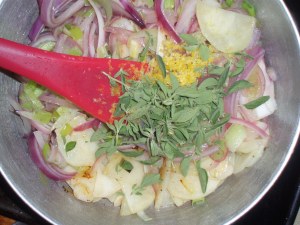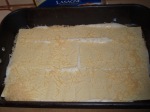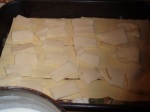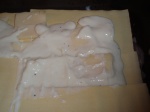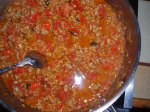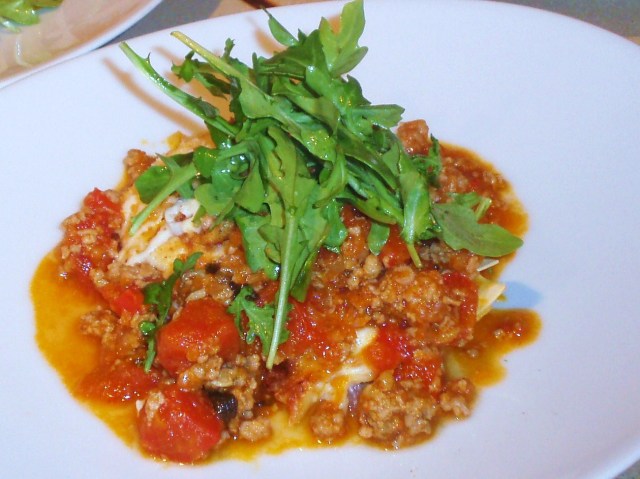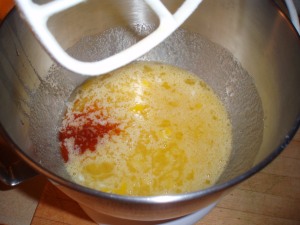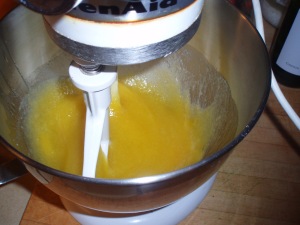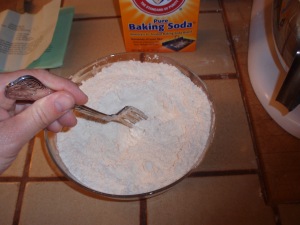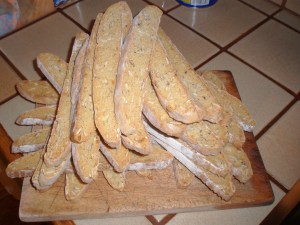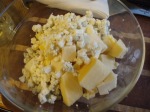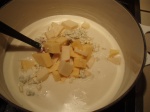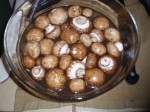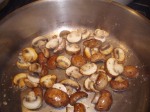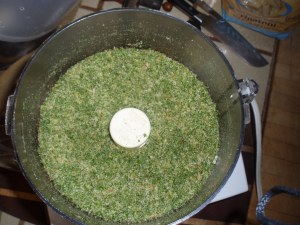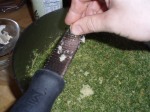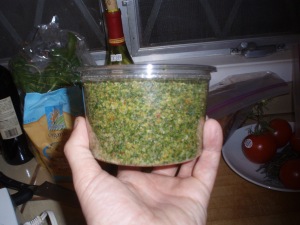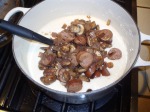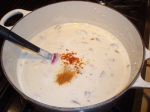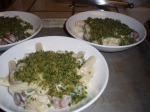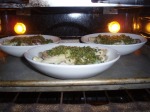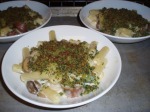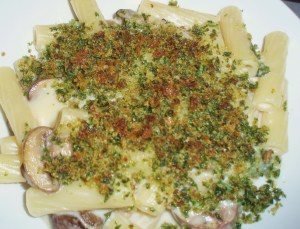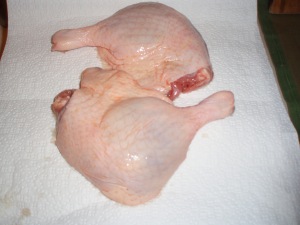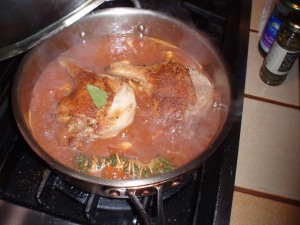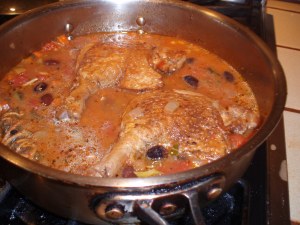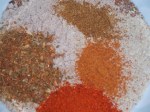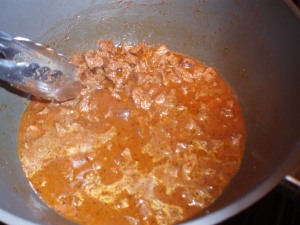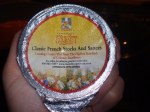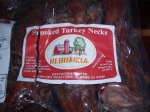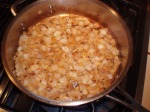Welcome back, gentle readers! I’ve been away from the computer (and the kitchen) for a little while as I’ve been settling into my new role as the gm for Firefly, a landmark neighborhood institution here in San Francisco. Now that I’m fully plugged in, I wanted to get back to feeding you, too.
Lasagna, for me, falls into a special category of foods; good today, better tomorrow. So when I can, I get started on this dish a day in advance. However, pulling a dish like this together and not eating it, requires more will power than I have the time to cultivate. Ah well. This style of lasagna, bound together with a cheesy sauce, was introduced to me by Michael Park back in the day. I don’t make it any other way now. Also, I like the “no boil” noodles, but do what your heart wants. Let’s jump right in –
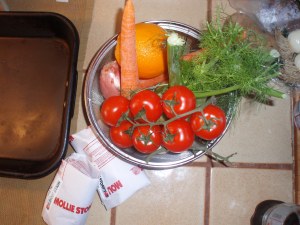 When I make a lasagna, I like to make the sauce separately. In this case I made a pork and beef red sauce, with onion, garlic, carrot, fennel, and orange.
When I make a lasagna, I like to make the sauce separately. In this case I made a pork and beef red sauce, with onion, garlic, carrot, fennel, and orange.
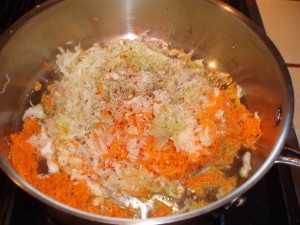 Here’s the soffritto shot. In the French tradition, the aromatic base for a dish is mirepoix, (onion, carrot, celery) in the Italian tradition; soffrito (onion, garlic, carrot, fennel, other tasty things). The Italian style uses olive oil, but the principal is the same for both, sweat some tasty bits of vegetables until they are soft and sweet and delicious.
Here’s the soffritto shot. In the French tradition, the aromatic base for a dish is mirepoix, (onion, carrot, celery) in the Italian tradition; soffrito (onion, garlic, carrot, fennel, other tasty things). The Italian style uses olive oil, but the principal is the same for both, sweat some tasty bits of vegetables until they are soft and sweet and delicious.
Next, brown the meat(s), deglaze with a little wine and reduce that wine by half. Then I added the tomato product and aromatics. Fresh oregano and a little orange zest went in the pot. Next up, cheese sauce!
By my count, we’ve seen the above process (or some variation) fifteen hundred times already at swfoodworks.com. We do however have a technique newcomer; singer (sawn-jay). Here’s what Larusse has to say: “Singer A French culinary term meaning to sprinkkle ingredients browned in fat with flour before adding liquid (such as wine, stock or water) to make a sauce”. But that’s not all, “[t]he term previously meant to colour a sauce with caramel, which was familiarly called jus de singe (‘monkey juice’)”. Which only reminds me of Eddie Izzard’s Dressed to Kill monolouge in french. I’ll spare you the laborious reading, and point you here if you have questions about what makes a roux, bechamel, or mornay. I’m making a quart of sauce, so I started by sweating some garlic cloves and bay leaf in a couple table spoons of butter. When that smelled great, I sprinkled a couple of heaping table spoons of flour in the pot and whisked it around for a few minutes. Then I added the quart of whole milk and stirred until the whole mess thickened. Voila!
 For the lasagna proper, I wanted to make a vegetable filling of potatoes (above sauteed with garlic), red onion, oregano, and citrus zest (below, in the bowl).
For the lasagna proper, I wanted to make a vegetable filling of potatoes (above sauteed with garlic), red onion, oregano, and citrus zest (below, in the bowl).
Now that the meat sauce has simmered and is delicious, the bechamel is prepared, and the filling is ready, we have to assemble the dish. I have some fresh mozzarella to add some cheesy-body and I wanted to add a little ricotta along with the filling. Here is the assembly process in photos, and the directions in haiku:
Sauce, noodles, filling
cheese, sauce, noodles, cheese, filling
cheese, noodles, sauce, cheese
Of course, please finish with seasonings (salt, pepper, nutmeg?), wrap with foil and bake in a hot oven (350 or so). Peek under the foil after an hour to see how everything is coming along. If the sauce is bubbly, you’re good to go. Remove the foil and bake (or broil) looking for a nicely browned top layer. Comme ça. 
Now, let that steaming tray of delicious sit on out and start to cool. If you can stand it, wait for several hours before cutting out a slice and making lunch. If you can not, at least wait while you set the table.
Then, heat up your ragout, cut out a slice, and sauce the noodles. If you are making this plate after the lasagna has had a chance to rest, it’s easy to heat up the individual servings on a sheet tray or small oven proof dish.
No fancy wrap-up for this posting. I just want to wish the best for your family, friends, health, and happiness. Au revior, Scott.




